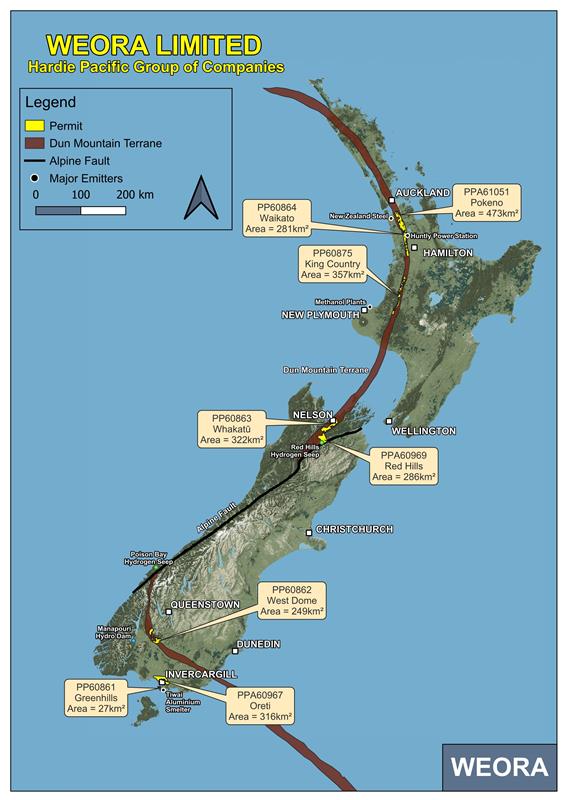Carbon Sequestration Potential
Magnesium rich ultramafic rocks are found throughout Aotearoa New Zealand. When exposed to CO2, these rocks chemically react and form new carbonate minerals, permanently binding the CO2 in the resulting rock.
This is a natural process called carbon mineralisation which can be accelerated using proven methods already adopted in Europe. We believe carbon mineralisation has the potential to play a pivotal role in Aotearoa NZ’s transition to a sustainable, net-zero-carbon future.
Weora Limited holds 8 Mineral Permits primarily focused on the magnesium-rich ultramafic rocks dunite and serpentinite which are highly reactive with CO2. Based on lab tests, the dunite within Weora’s permit areas have the some of the highest recorded magnesium contents among the ultramafic.
Weora has concluded a 5 hole drilling programme totalling 2,670 meters drilled. The rock samples from these boreholes have yielded very promising results, showing a continuous presence of magnesium-rich dunite from the surface to the end of the borings in the dunite zone.
Rock samples from our permit areas have been sent to laboratories where they are being subjected to various mineral carbonation tests. The lab data combined with conventional exploration methods for reservoir definition, will allow us to identify suitable sites for trial in situ carbon mineralisation.
